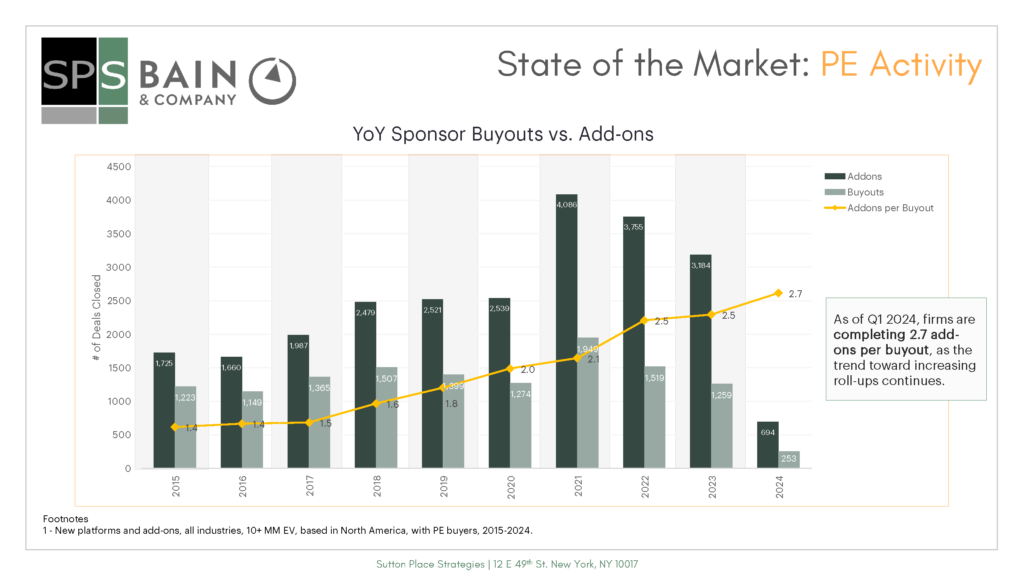This is Part 2 of a two-part summary of key insights from Bain & Co.’s 2024 Global Private Equity Report. Read Part 1 here for the key challenges facing the private equity industry today. Part 2 dives into key levers for PE to mitigate current market condition and opportunities for growth in the years ahead.
The Road Ahead
Despite economic fluctuations and geopolitical tensions, PE firms have continued to adapt and thrive with their ability to swiftly pivot strategies, capitalize on emerging trends, and leverage their expertise in navigating complex market dynamics.
Shifting Strategies: Bain’s report highlights the ongoing shift in both investment and exit strategies. Firms are increasingly focusing on sectors with strong growth potential, such as technology, healthcare, and renewable energy, as well as industries that MacArthur refers to as ‘proof’ businesses, meaning businesses that have proven stability through uncertain conditions, i.e. those that are ‘recession-proof’.
He also emphasized that the shift in value creation dynamics underscores the importance of strategic acquisitions and operational efficiencies in driving returns in the coming decade. The buy-and-build remains a strong and popular strategy for value creation, with SPS finding that 2.7 add-ons were completed per buyout in Q1 2024.

In response to the constrained exit environment, investors must also explore innovative exit strategies to reasonably unlock value in their portfolio companies, even if they are not ideal scenarios. These tactics may include finding ways to meaningfully increase EBITDA in the near term, injecting small amounts of equity, leveraging continuation vehicles, or negotiating with banks to change capital structures.
Embracing Digital Transformation: Digital transformation remains a key driver of growth in PE. In addition to identifying potential use cases for AI to capture efficiency, Bain’s research indicates that successful firms are leveraging all types of technology, including data and analytics.
The first step for firms to take, if they have not already, is to perform an audit of their internal firm operations as well as those of their portfolio companies to determine the areas where technology could streamline or augment processes. With regard to the potential risk of leaning on technology, MacArthur suggested the biggest risk is “not playing”.
The Rise of ESG Investing: As regulatory complexities continue to pose challenges for private equity investors worldwide and sustainability becomes a central theme in global markets, private equity firms are aligning their investment strategies with ESG principles to create long-term value for stakeholders.
Meeting the Moment: Amid this confluence of changing industry trends and the abstract prospect of a market bounce back, many PE firms are still wondering what the best steps are to take now. The overarching answer may be to stop waiting for a tectonic shift, accept the current market conditions, and begin playing.
For instance, with dry powder at its current levels and with very high competition for quality assets, MacArthur suggested a likelihood that prices will remain relatively high. He also indicated that the decline in deal activity was not necessarily due to the scale of interest rate hikes but rather the rate at which they increased, whereas now rates have remained level for some time.
He said, “What our industry dislikes more than anything when it comes to dealmaking is volatility. If you have a stable interest rate and stable macro conditions, then the ability to do deals and exit will shine through… Our question for the industry is: what are you waiting for? This is the situation – it’s relatively stable. Let’s go do deals. Let’s do exits. Let’s get the private equity flywheel back where it belongs.”

